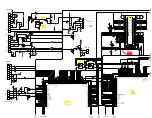
WWW.BALTIMOREAIRCOIL.COM
23
Bleed Line Calculations
: Bleed rate is determined by the following formula:
E
Where
: B = Bleed Rate (USGPM)
E = Evaporation Rate (USGPM) = Q (USGPM) x R (°F) x 0.001
Q = Process Fluid Flow Rate (USGPM)
R = Range
n = Desired Number of Cycles of Concentration = CR/CM
The evaporation rate is dependent on the wet bulb temperature and load. The equation
shown above provides the maximum bleed rate on the design day. Contact your local BAC
representative for an exact calculation based on specific site conditions.
PT2
Bleed Rate
4
In evaporative cooling, evaporation of a small portion of the recirculating water as it flows
through the equipment causes the cooling effect. As this water evaporates, the impurities
originally present remain in the recirculating water. The concentration of the dissolved
solids increases over time and can reach unacceptable levels. In addition, airborne
impurities are often introduced into the recirculating water. If these impurities and
contaminants are not effectively controlled, they can cause scaling, corrosion, and sludge
accumulations that reduce heat transfer efficiency and increase system-operating costs,
potentially shortening the useful life of the equipment. The degree to which dissolved
solids and other impurities build up in the recirculating water may be defined as the cycles
of concentration. Specifically, cycles of concentration equal the ratio of the concentration
of dissolved solids (for example - chlorides, sulfates, etc.) in the recirculating water to the
concentration of the same material in the make-up water.
• In order to optimize heat transfer efficiency and maximize equipment life, bleed or
blowdown a small amount of recirculating water from the system. This controls the
cycles of concentration to maintain the quality of the recirculating water within the
guidelines given in
Table 2
, on
page 19
.
• Replenish the “bleed” water with fresh make-up water, thereby limiting the build-up
of impurities.
• Bleed/blowdown:
–
To minimize water usage, accomplish the bleed automatically through a solenoid
valve controlled by a conductivity meter. The set point is the water conductivity at
the desired cycles of concentration and should be determined by a water treatment
expert.
NOTE:
A proper water treatment
program, administered under the
supervision of a competent water
treatment specialist, is an essential
part of routine maintenance to
ensure the safe operation and
longevity of evaporative cooling
equipment, as well as other system
components.
NOTE:
The solenoid valve and
conductivity meter must be
supplied by others. Evaporation is
proportional to the load and will
vary seasonally. BAC recommends
the use of a conductivity meter to
maximize water conservation.
(n-1)
NOTE:
The approximate design
evaporation rate (E) can be
determined by any one of the
following methods:
• The evaporation rate is
approximately 2 USGPM per 1
million BTUH of heat rejection.
• The evaporation rate is
approximately 3 USGPM per 100
tons of refrigeration.
• Evaporation Rate =
Q (USGPM) * R * 0.001.
B
=












































